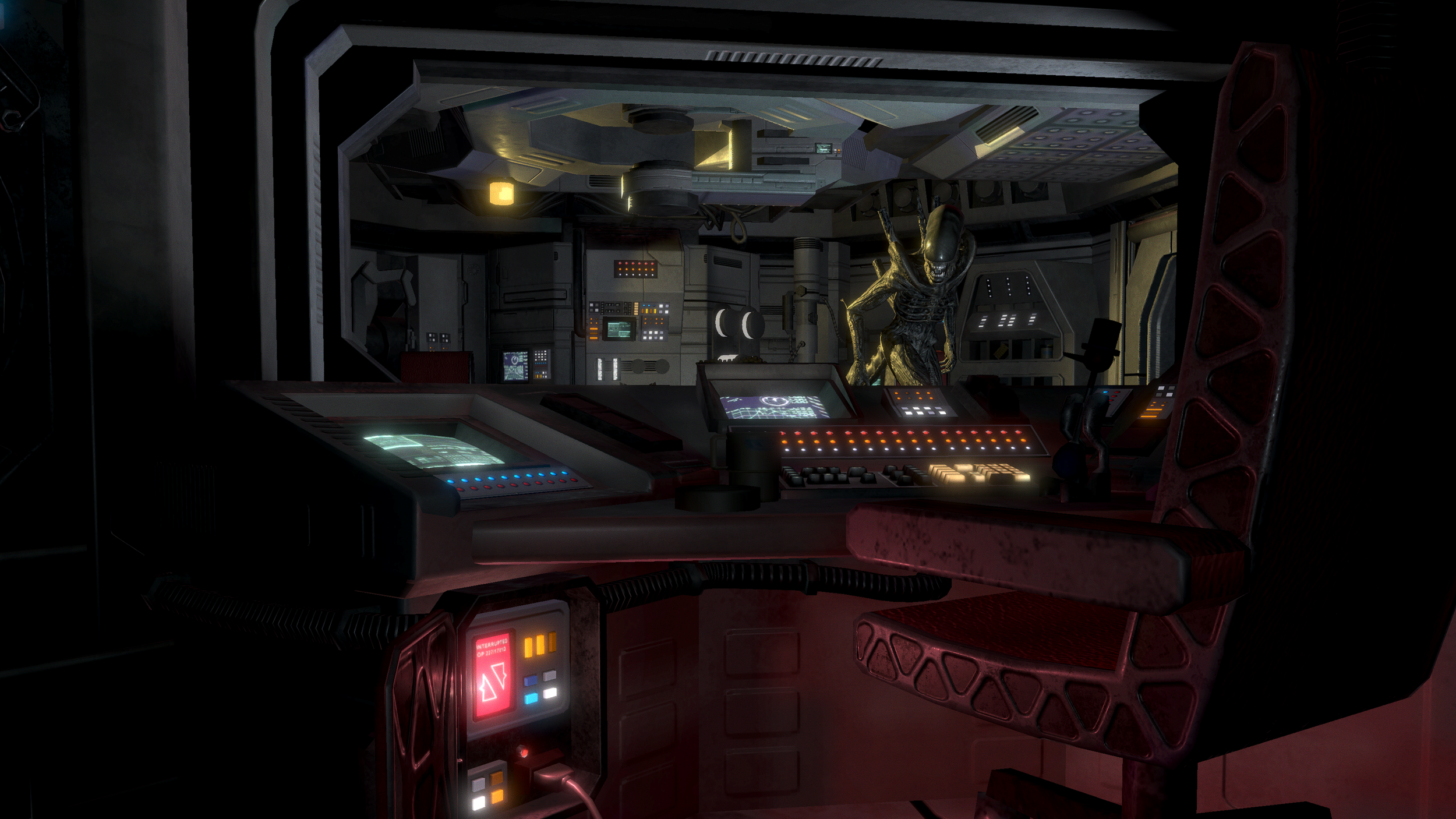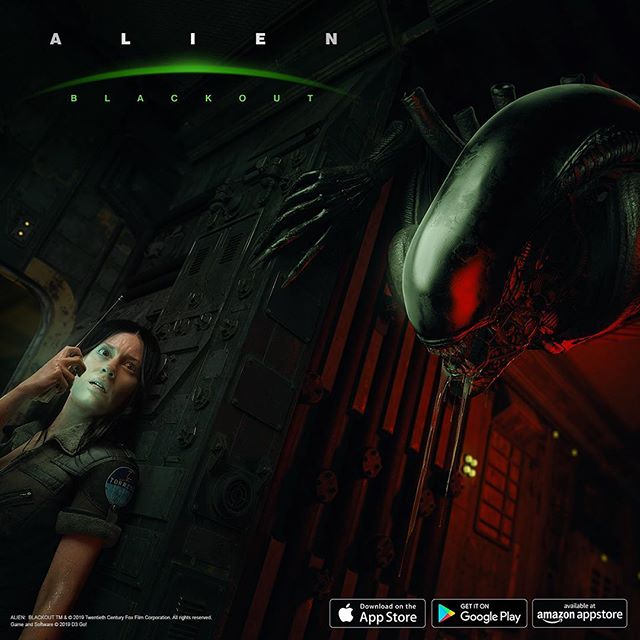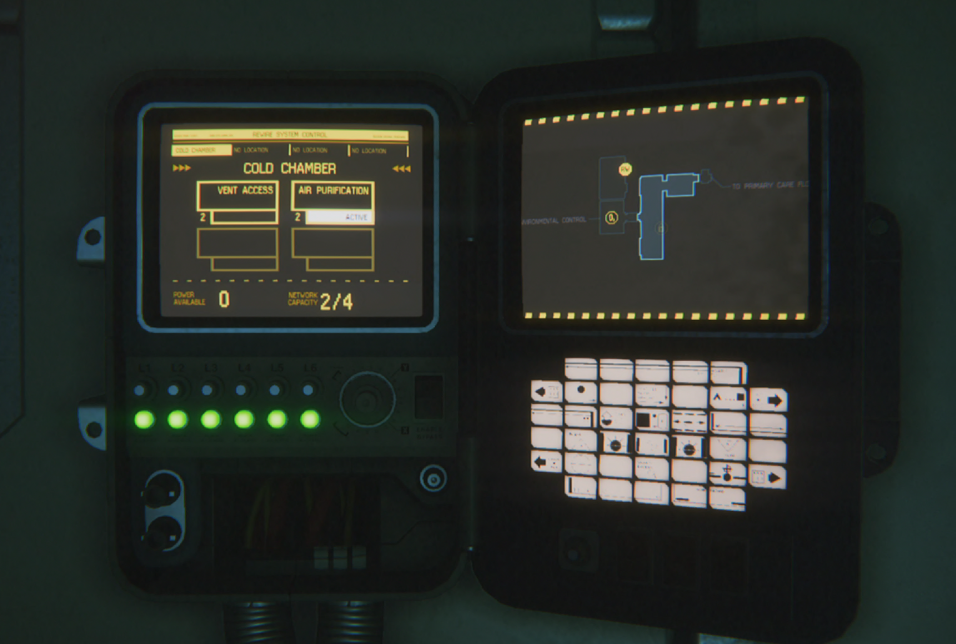Twentieth Century Fox/D3 GO!
If you’ve played Alien: Blackout, you’ve undoubtedly noticed how hauntingly effective the soundscape is. Between the eerily beautiful music and the carefully crafted sound effects, Blackout has made an impact as a true sonic experience. We reached out to Rival Games’ Tommi Hartikainen, the lead composer and sound designer, to learn more about why this thing is such a joy to listen to.
How did you come to be lead composer/sound designer on a mobile game title? What about your background—in music, in design/mixing, etc.—made you well suited to this sort of project?
One can find a differing demographic of players altogether on mobile platform, and as the control mechanisms and the device itself are so different from traditional consoles or PC, it also creates new interesting possibilities for game design. We were excited to make the Alien franchise accessible to new players and put a new spin on it.
My background is quite colourful. I've worked as a [deep breath] game designer, writer, sound designer, musician, band leader, recording-, mixing- and mastering engineer, music producer, arranger, composer, dialogue editor, re-recording mixer, foley artist, field recordist … and my latest title of audio director just stuck to me in a good way. Having a firm grasp of most of these jobs is a must, and the experience I have acquired from music production, live music, installations, theatre, film and gaming is a substantial bonus.
Were you a fan of Alien before this? What’s your history with the franchise?
I was just a kid when I first saw Alien and was immediately enthralled and inspired by it. It is still most definitely one of my all-time favourite films. I have watched all the movies multiple times and still find new details and qualities I have not noticed before. The first time I was personally pitted against a xenomorph was either the really fine Alien 3 on Sega Mega Drive (as the Genesis was known outside North America), or the acquired taste that was Alien on Commodore 64. I do think I was late to that particular party.
What was the creative process like during Alien: Blackout? Were priorities, aesthetics, etc. laid out clearly from the beginning? Or was it more iterative?
Yes, we had quite clear goals, references and inspirations from the get-go. All departments did get to define their own vision with those goals in mind. We were aiming to capture—above all else—the atmosphere of the first movie, while incorporating that into what we do. We wanted to stay true to the franchise, but also make the game our own.
What are some of the challenges specific to designing for a mobile context? Did you find them creatively liberating?
Technical challenges are extremely motivating. Working with or around limitations, and to make best use of unique possibilities mobile devices offer can be very inspiring. The mobile platform presents specific challenges most notably with available hard drive space and to a lesser degree with processing power. Taking into account the humble default device speakers some choose to play on influences mixing greatly, as it must be taken into account.
The musical score is deeply evocative: string-driven and melodic, but somehow disembodied. It’s relatively static, harmonically—there are lots of pedal points, etc.—but it never feels like it’s actually at rest. It’s a wonderful sonic texture. What lead you in that compositional direction?
Heartwarming to find people enjoying the soundtrack! The hook with the music used in-game was that I wanted it to react, on more of a subconscious level, to the game events unfolding. It had to establish the underlying mood while still staying musically relevant, yet not forcing itself to the forefront. The layering- functionality presented its own challenges, especially to the development of themes and sound envelopes, so to speak. I wanted to reflect the feel and specific qualities of the films while...quite literally bringing something of my own to the mix. The songs used in the static set-pieces are a bit more straightforward in nature and they were in a position to afford growing more eventful, while still maintaining the atmosphere as top priority.
What are your favorite tools of the trade, musically speaking? In terms of notation software, digital audio workstations, mastering software, MIDI devices, etc?
I’d hate to bore you to tears, but I probably will, as I’m using the industry standard (latest) Pro Tools as my DAW and only recently hopped from Finale to Sibelius as notation software. Nothing out of the ordinary. I do maintain a colourful collection of gear from esoteric, weird vintage stuff to common studio mainstays. Microphones, preamps, rack gear, alternative monitoring, synths, midi controllers, drums/percussion, a variety of stringed instruments and their assorted stomp boxes, amps and cabs. I did recently switch to EUCON-based Avid Artist series in DAW controllers as a fun opportunity turned up. I have always found tactile, intuitive and ergonomic tools downright essential. Especially in the high-speed world of game audio. Mostly yawn-tier stuff, though, as I feel there’s a place somewhere for every single piece of audio gear ever made.
What’s your favorite score from the Alien series?
I’m very much into a lot of them for completely different reasons, but should I have to pick one, I’d go with the original Alien by Jerry Goldsmith. Groundbreaking, evocative soundtrack.
What came first: the score or the sound mix? Did they influence each other at all?
That’s a really good question! I started creating the soundscape for the game by recording, designing and mixing the basic ambiences of the space station, the humms and dronings, and the metal sounds that are very prominent throughout the game. They had to cut deep. The music started to take a sonic shape around that and yes, there is a deep level of reciprocation and a division of certain molds between the sound effects, voice overs and the soundtrack.
An added challenge was incorporating the original sounds we received for use from the franchise’s archives. Mostly xenomorph- voices to stay as true as possible to the world of Alien, but also some foley for it and some specific environmental sounds to take some load off from the tight schedule. I had to painstakingly compile, extensively layer, re-edit and re-mix these to form the cohesive aural picture I had tried to envision. So no, there was absolutely no flipping of assets, here.
One of the first things you notice when playing Alien: Blackout is how directional the sound is. It seems like many games—even blockbuster releases—treat sound more as set-dressing than essential for gameplay. When sound DEFINES the gameplay experience—as it does in Alien: Blackout—does that influence your creative decisions?
Short answer: totally. Long, rambling answer: The gameplay is number one. Everything has to facilitate, deepen or support intuitive gameplay. Soundwise, voice overs are always number one. Nothing carries as much emotion and creates such immersion as the human voice. Voice mixing, I feel, is one of my strong suits, so that played in our favour here, luckily.
We did have lines of dialogue between direction, game-, graphic- and audio design open non-stop throughout development, even though me having to spend so much time behind closed doors in the studio sure creates little bumps along that road, at times. I think we managed practically everything I set out to say with sound, here, and a reasonable compromise with the rest. Our audio programmer, Ville Ojala, did swimmingly incorporate my unfathomable jargon and wild ideas into concrete events in the game. He also took part in sound design when doing so, as it should be. Audio programming is a vastly underappreciated discipline.
Are most of the sounds created digitally? Or did you record foley?
From the sound effects I created, there are only a handful of sounds of digital origin. I did do a whole heaping bunch of metal sounds in particular, but also ventilation sounds, fans, radiators, electronic devices, switches, whistles and such.
What was your favorite sound to create, and how did you go about making it?
Having to choose just a single sound, I’d go with one of the very specific metal tones I did. One that was bendy, punchy, crackly, short and percussive. While the most comedic one to make, it was used in a most unamusing situation in-game. Campfire-mode, engage! My family got a new microwave oven, and while I was heaving the metal monstrosity from the car to our place, I happened to apply pressure on the surface plate and it made this glorious bouncy sound with a very pleasing resonance that followed. Instead of the kitchen, I carried it to the studio, close-miked it in a small, dry room with a 421 and...I think it was an 47- replica I turned out liking the most for some reason, recorded a few appropriate elbow-presses on the thing, edited the best few takes, threw on a whole slew of processing, et voila! I had yet again managed to both act and look incredibly silly at work.
LISTENER QUESTION (from Mike Andrews): What inspired you to create an original soundtrack to Blackout (without relying on preexisting cues and motifs from the films)? Were you given complete creative freedom?
I thought we’d be able to get the best of both worlds with an original soundtrack that’s inspired by—but not in debt to—the films. The xenomorph voices I re-mixed from the originals do plenty on their own to establish a direct auditory association with the franchise feel at a precise key point, in my view at least. I consider a cohesive, uniform approach most often the best way to approach audio, and having to borrow all music from the films clearly seemed more like a hindrance than a selling-point in favour of the game.
For all the new fans you’ve gained via your work on Blackout: where can we find more of your work?
We here at Rival Games are always working to create more quality entertainment, so my advice would be to stay tuned!









